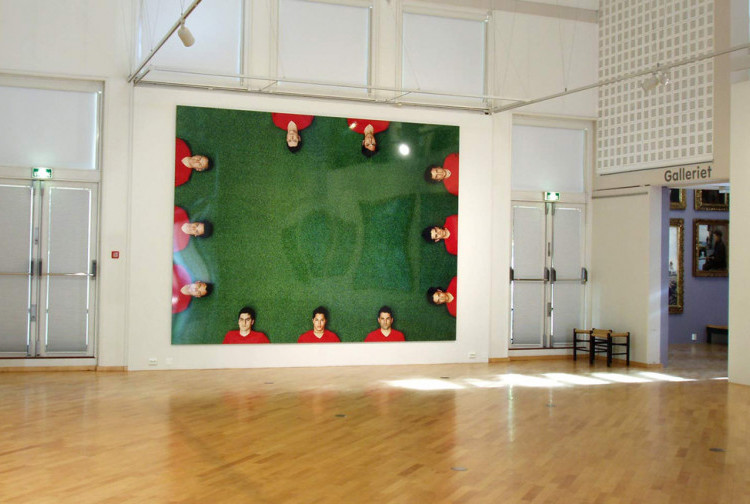Discourse
The exhibition is a contribution to the celebration of the dissolution of the union in 1905. By showing Swedish and Norwegian art side by side, we want to help strengthen and further develop the good cultural relations between our two neighboring countries.
The anniversary provides a natural background for presenting a small taste of Swedish contemporary art.
The exhibition has its ideological origins in the discourse that took place during the negotiations in Karlstad in 1905. The delegations both took a steep and irreconcilable attitude. The negotiations were initially quite stalemate,
but gradually the dealers showed a willingness to listen to each other. Fortunately, the end of a difficult political discourse ended with the signing of the Karlstad Settlement on 23 September.
The term discourse can be described from a communication theoretical point of view as a message between sender and recipient. In 1905, the term discourse was linked to a political theme. In this exhibition, Drammen Kunstforening has sought to connect the term to visual aspects. When any work of art conveys visual messages, one imagines that selected images will be able to trigger a discourse between themselves and the viewer. The discourse idea has therefore to a certain extent dictated the design of the exhibition concept. The artists are not selected on the basis of quality criteria, but at the same time considering that their works contain differences of both content and technical nature, moments that seem suitable precisely to evoke a visual discourse.
When the exhibition shows painting and photography, this is also a conscious choice. The claim from the 60's that the painting was dead has not been correct. As an artistic form of expression, painting has long been renewed and enriched by the use of new materials and techniques, not least with the help of photography and digital technology. The painting of today clearly borrows features from the photograph and the photograph in turn is given picturesque qualities and effects.
After Swedish Maria Friberg had painting as her preferred medium, she now works with film, video and photography. Her work largely deals with people who are living now. She has researched the man's social behavior and the role he has in society's power play. Maria Friberg makes no sketches, but tests her ideas by photographing different alternatives and studying which angles and color combinations work best. Once the final direction has been taken, the documentation can be taken care of by a professional photographer.
Ernst Billgren from Sweden is also present. His art represents a quite different world. The paintings testify to the great ability of lush fiction. Billgren makes use of lifelike painted people, animals and spaces that he places in an unexpected and surrealistic context, a tool he uses to express messages and thoughts often with an ironic and political slant. He is also no stranger to taking advantage of the traction help other materials can offer. Characteristically, the pictorial elements are composed in an unexpected and surrealistic context that often conveys symbolic thoughts and messages with satirical touches.
Both Anne-Karin Furunes and Harald Fenn were among the Norwegian artists who broke with the modernist and expressive form of the 80s and sought new possibilities in painting. Anne-Karin Furunes expresses herself with the perforated painting by utilizing the optical effect that the holes give. Illusion of image is based on the use of raster and appears clear or diffuse depending on the angle and focusing distance. This gives the impression of a fleeting image. The motifs often deal with people. At the exhibition we meet both a male and a female portrait. The male face Unknown from archive does not reveal any identity or affiliation. At first glance, he becomes anonymous to us, a human being among many. Nevertheless, it is perceived as difficult to free oneself from a gaze that evokes the experience of one's own transience.
Harald Fenn previously worked with traditional painting techniques, but felt a need to try new possibilities. He himself has stated that when he found his first spray can, it was a great happiness. In his new paintings, the connection to the Norwegian landscape tradition can easily be traced. With the help of sensitive use of the airbrush technique, the works are given qualities that are usually associated with photography and virtual computer technology. His landscapes are beautiful, have a lyrical and warm atmosphere, yet a sense of urge to solve picturesque challenges between soft transitions and clear contrasts and between surface and space.
To deepen and enrich the experience of the exhibition, it is recommended to study the catalog's essay written by mag.art. Kari J. Brandtzæg.
Helge Wahl
Drammen Kunstforening
Venue
Monday to Friday 11.00 - 15.00
Wednesday 11.00 – 18.00
Saturday 11.00 – 16.00 (free admission)
Sunday 11.00 – 16.00


